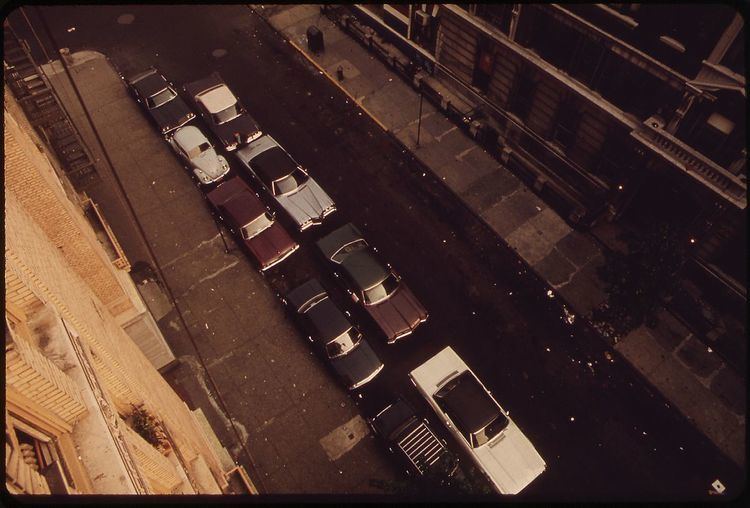 | ||
Double parking can refer to parking parallel to a car already parked at the curb, double parking in attended car parks and garages, or multi-space parking.
Contents
Parking parallel to a car already parked at the curb
"Double parking" means standing or parking a vehicle on the roadway side of a vehicle already stopped, standing or parked at the curb. This often prevents some of the vehicles in the first row from departing and always obstructs a traffic lane or bike lane (to the extent of often making the street impassable in one-way single-lane situations). In some areas, people double parking their cars leave the hand brake off, allowing the drivers of the cars next to the curb to push the double parked car a little forward or backward, in order to allow departing from the parking spot. Double parking in this fashion, where illegal, is often punished by ticketing or towing the offending vehicle.
This meaning has been extended to the practice of having a second drink waiting on the bar beside the one you are currently drinking.
Double parking in attended car parks and garages
Attended car parks and garages frequently use double parking to maximize vehicle storage density. A driver who double-parks in an attended car park leaves the vehicle's keys with the attendant. If the driver of the blocked car returns first, then the attendant can move the blocking car so that the blocked car can leave. This practice is especially common for valet car parks, in which attendants have the keys to all vehicles.
Multi-space parking
The term "double parking" is sometimes used to describe parking over the lines separating two designated parking spaces in a parking lot and is derived from situations where cars take more spaces than necessary, though this is more accurately known as multi-space parking. Though this practice is most commonly a result of the driver disregarding the separating lines, it may also occur when the driver avoids parking too close to a large vehicle (such as a truck or SUV) in a narrow space, or to a vehicle which is poorly centered in the adjacent space. Sometimes, parking in this fashion, if the vehicle is large, is an attempt by the driver of the vehicle to avoid damage to the vehicle or to nearby vehicles when the doors are opened, or to ensure enough space for loading or unloading various content. The egregiousness of parking in this fashion is usually judged depending on parking space availability. It can provoke anger and even vandalism towards the offending vehicle when parking is scarce.
